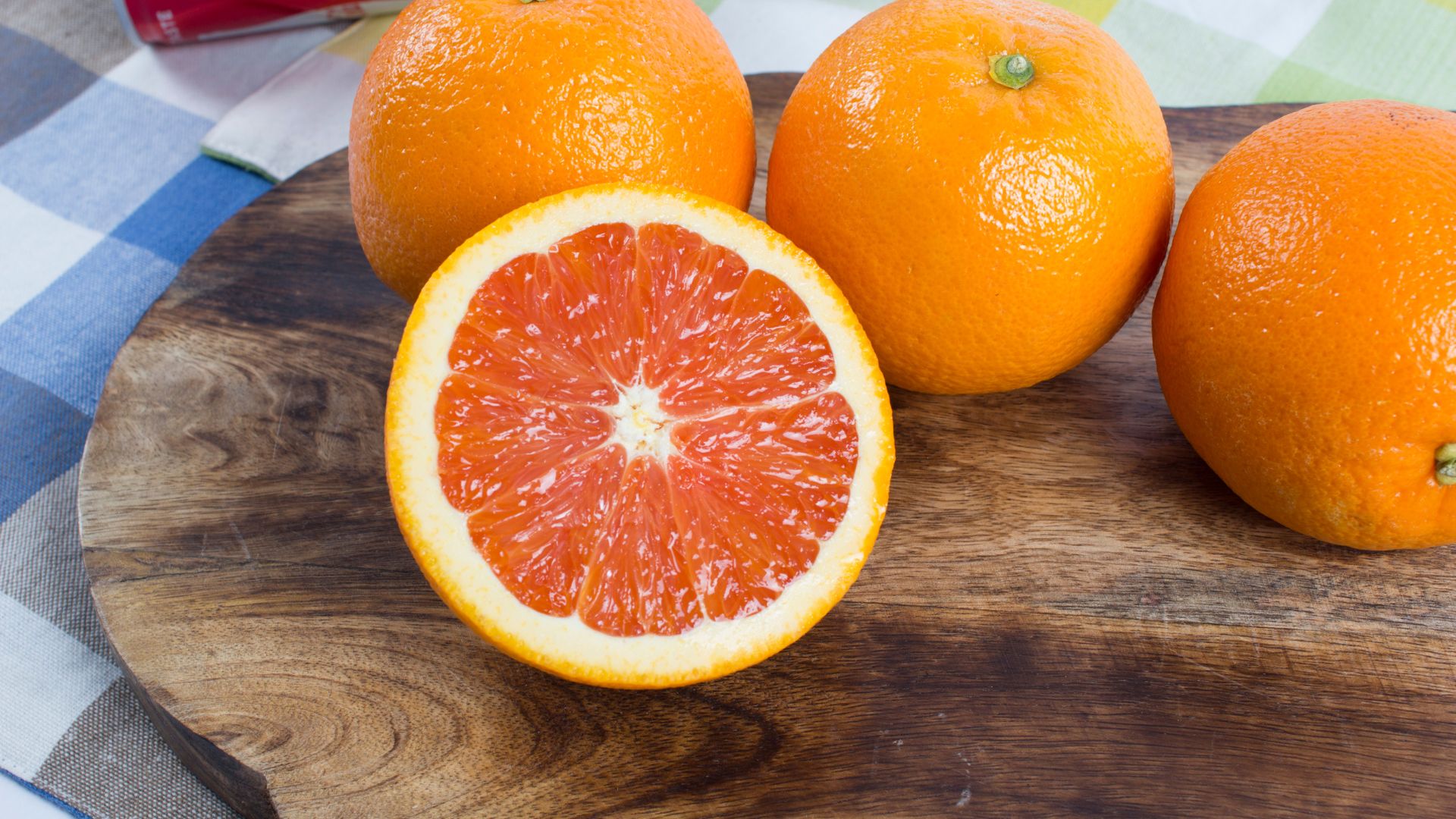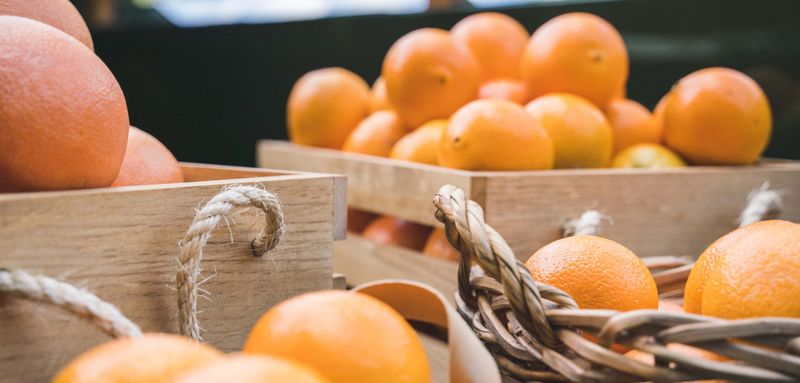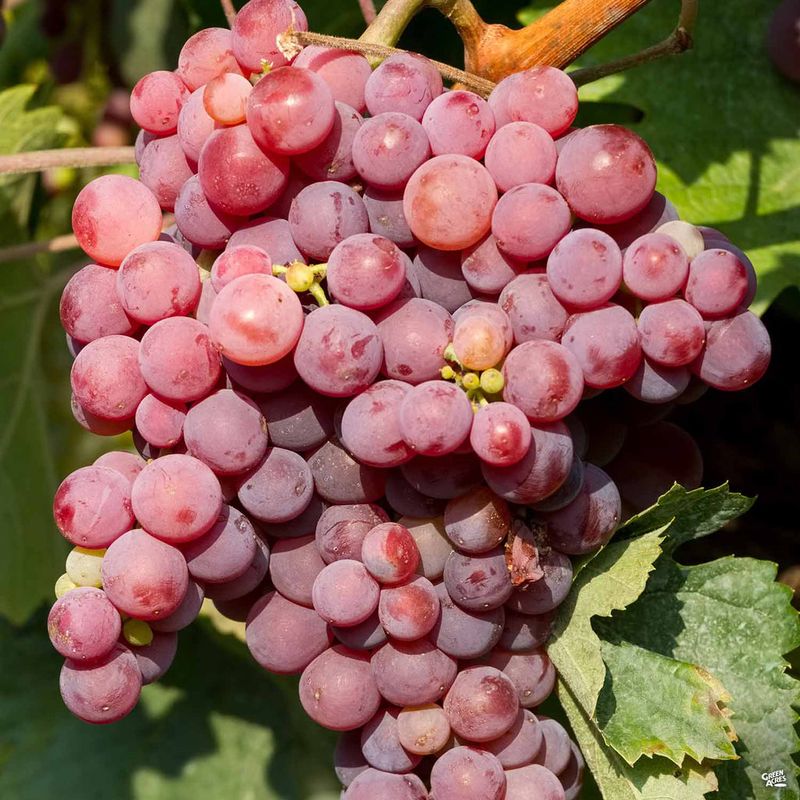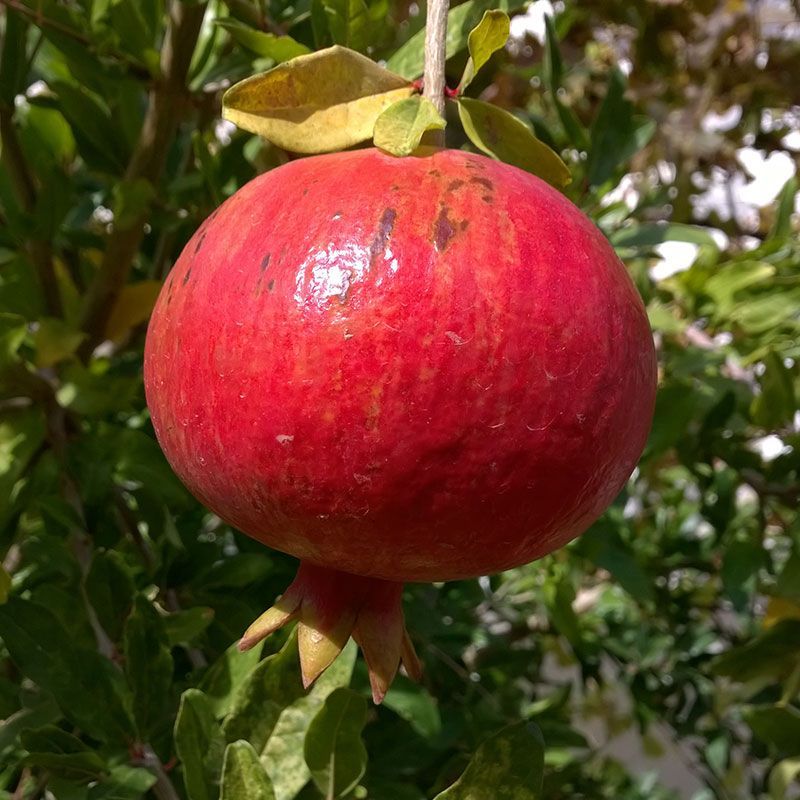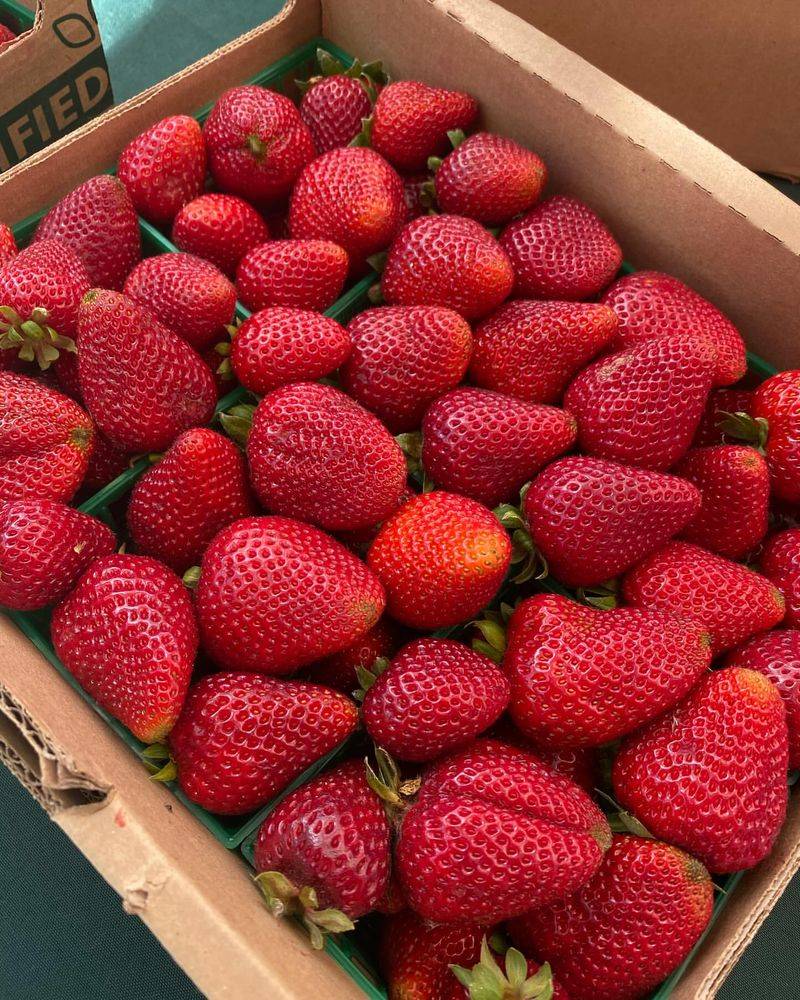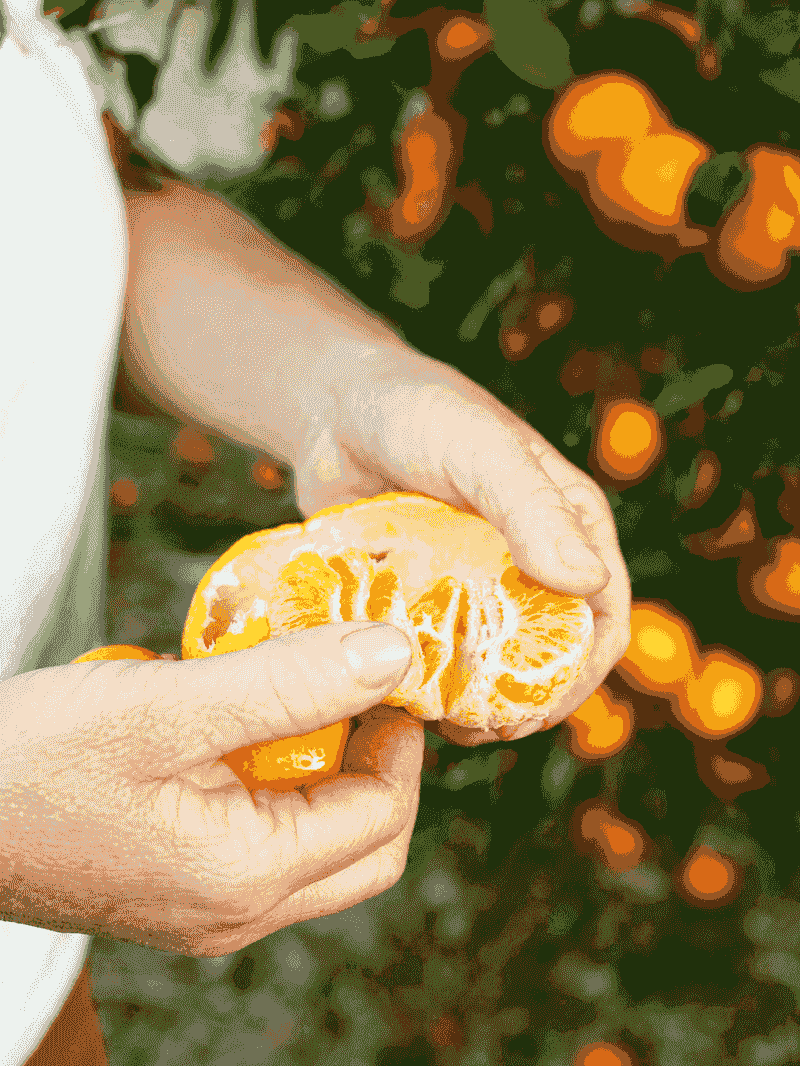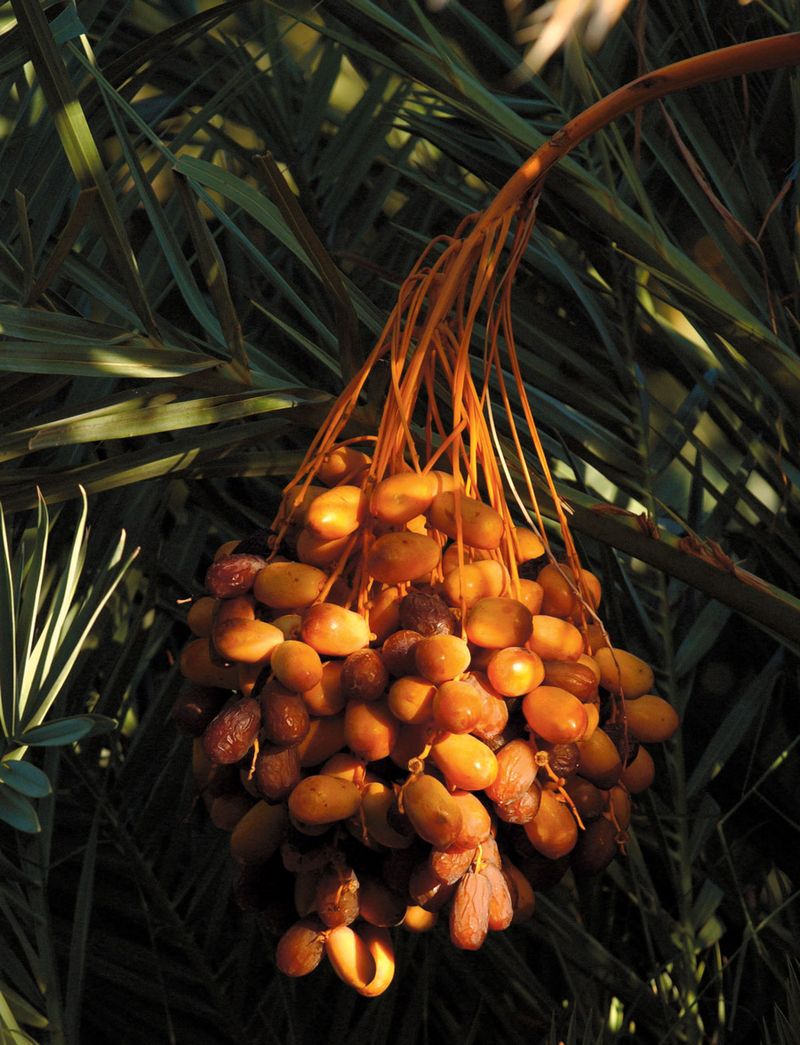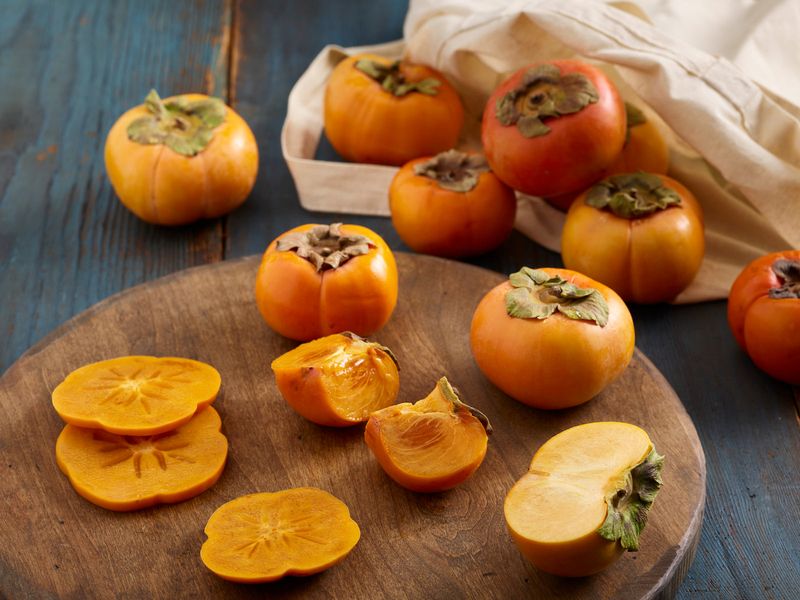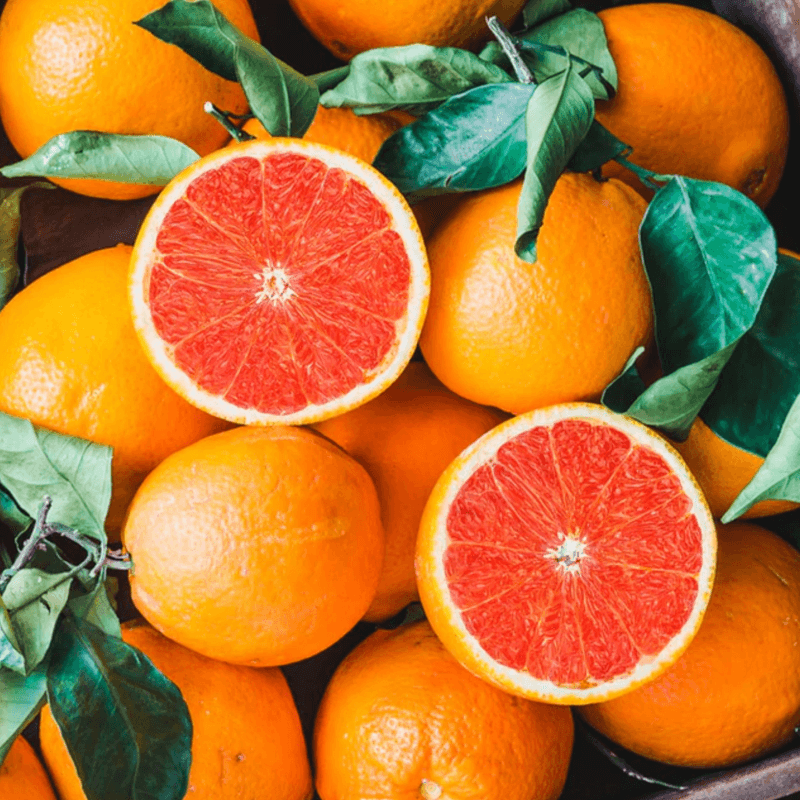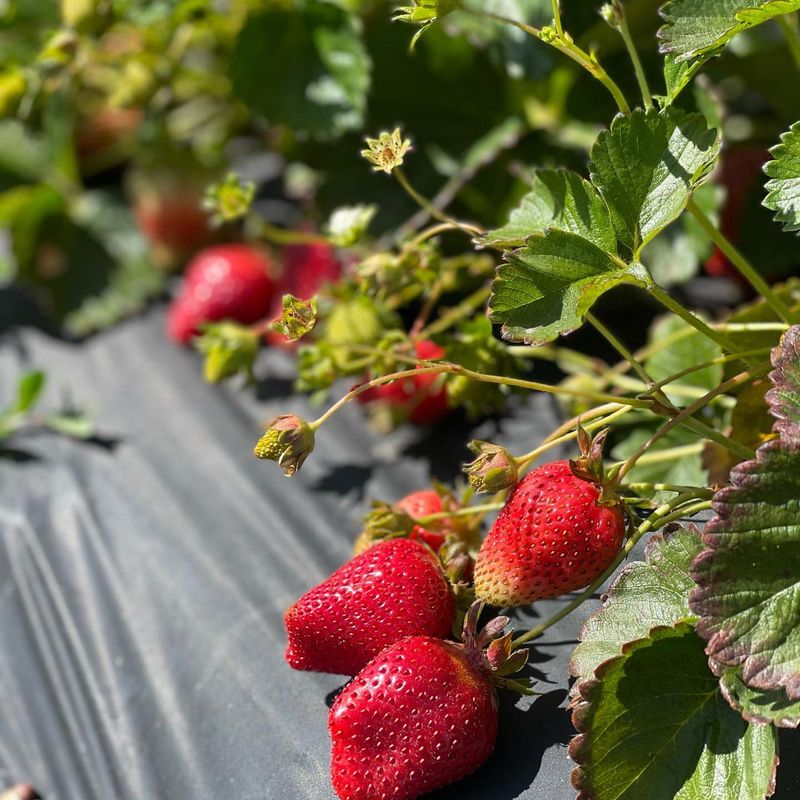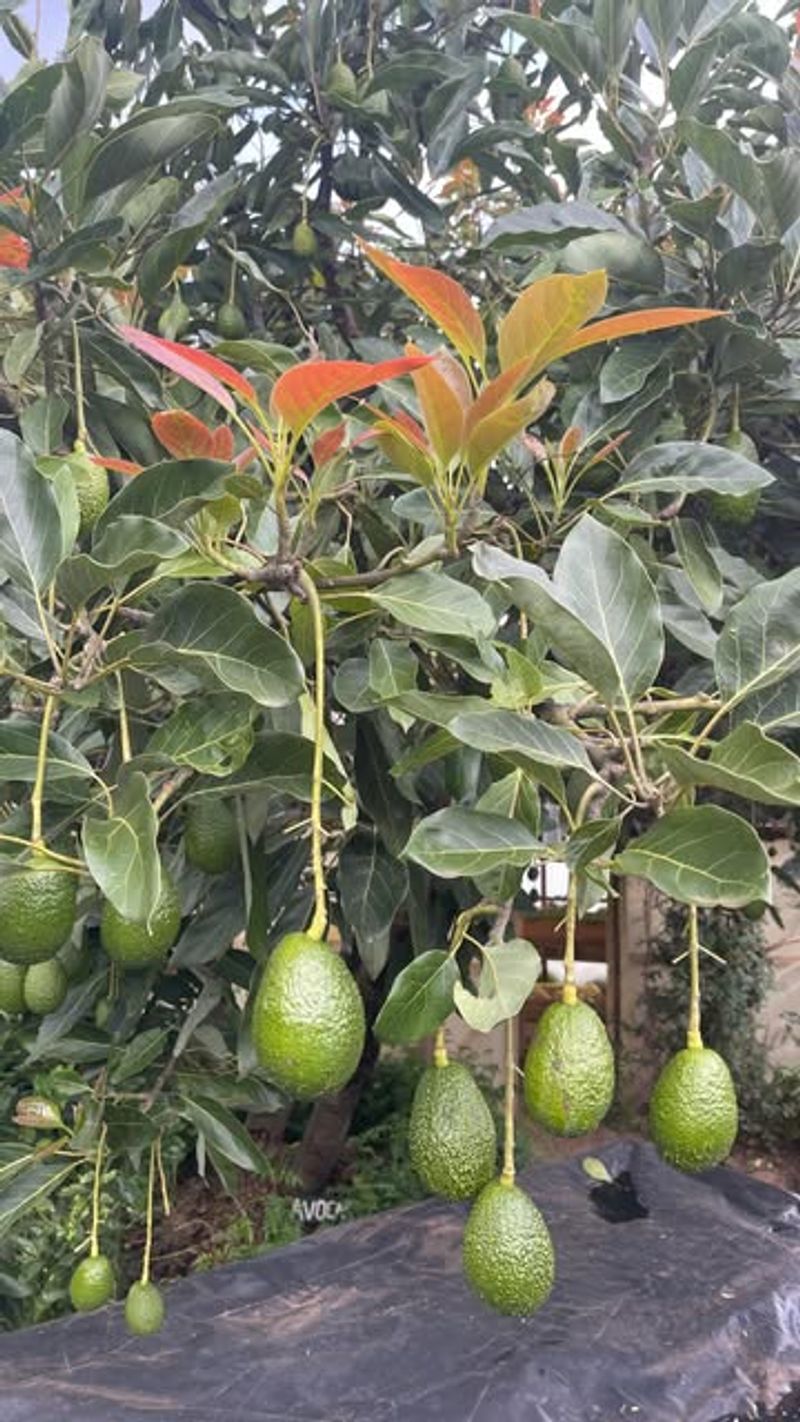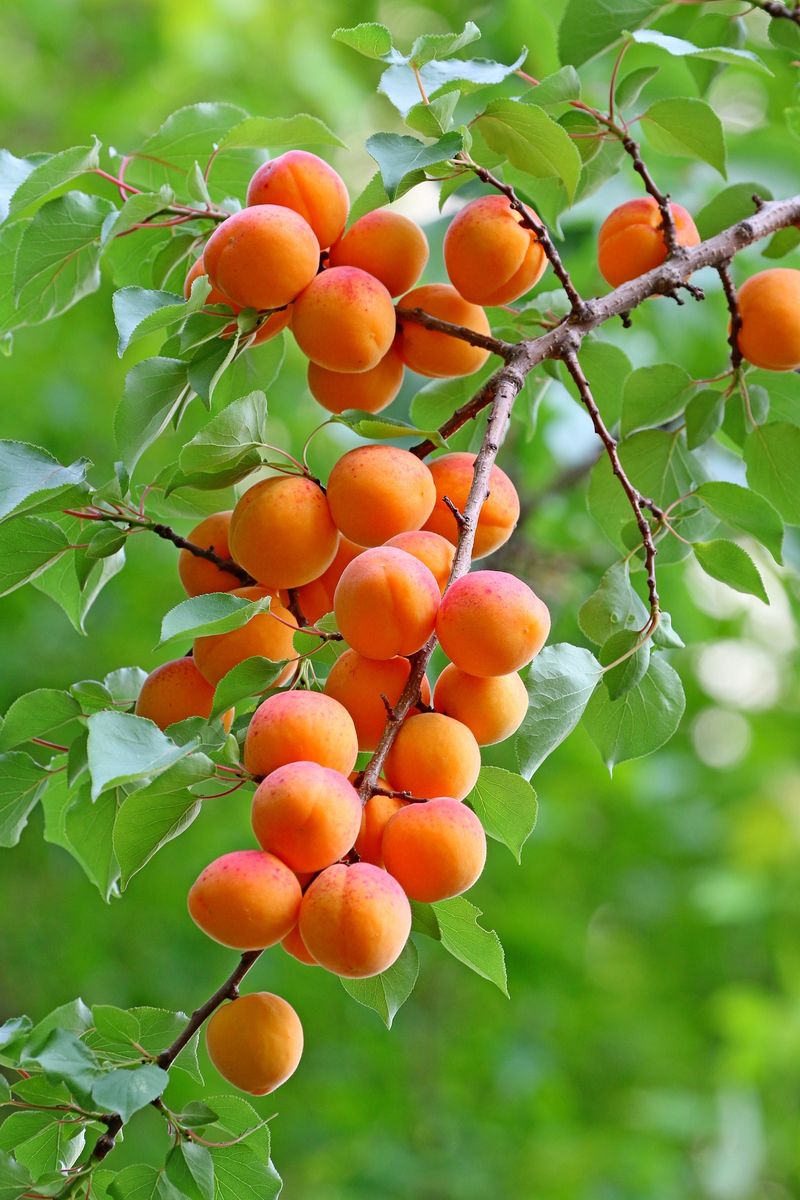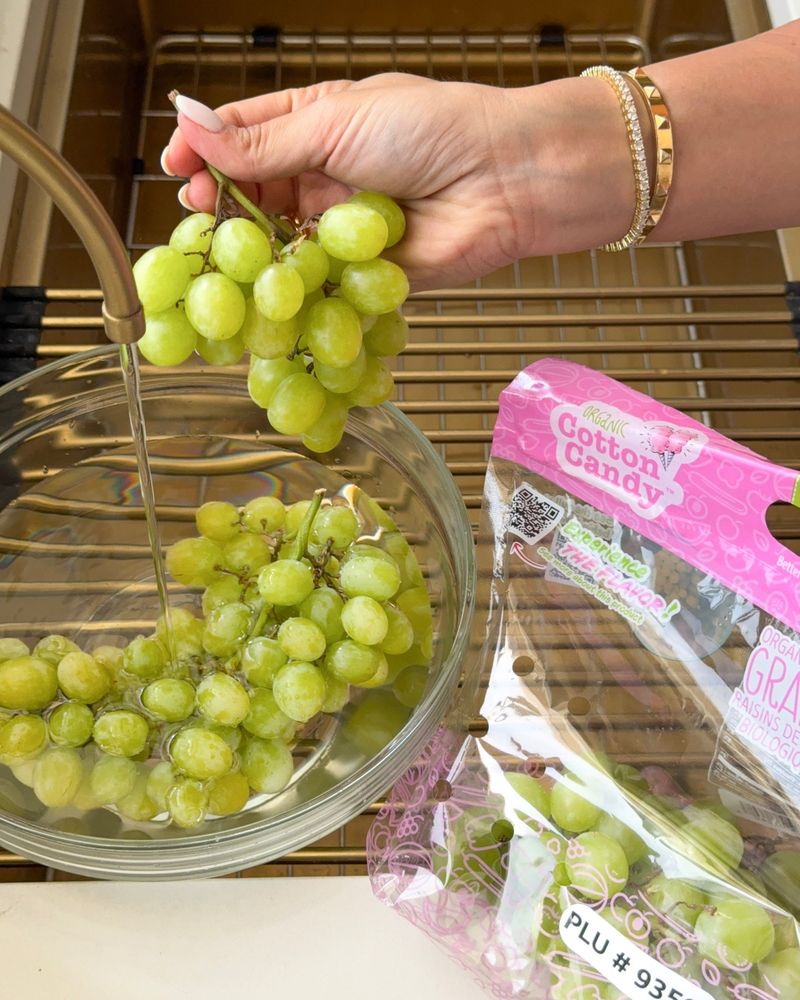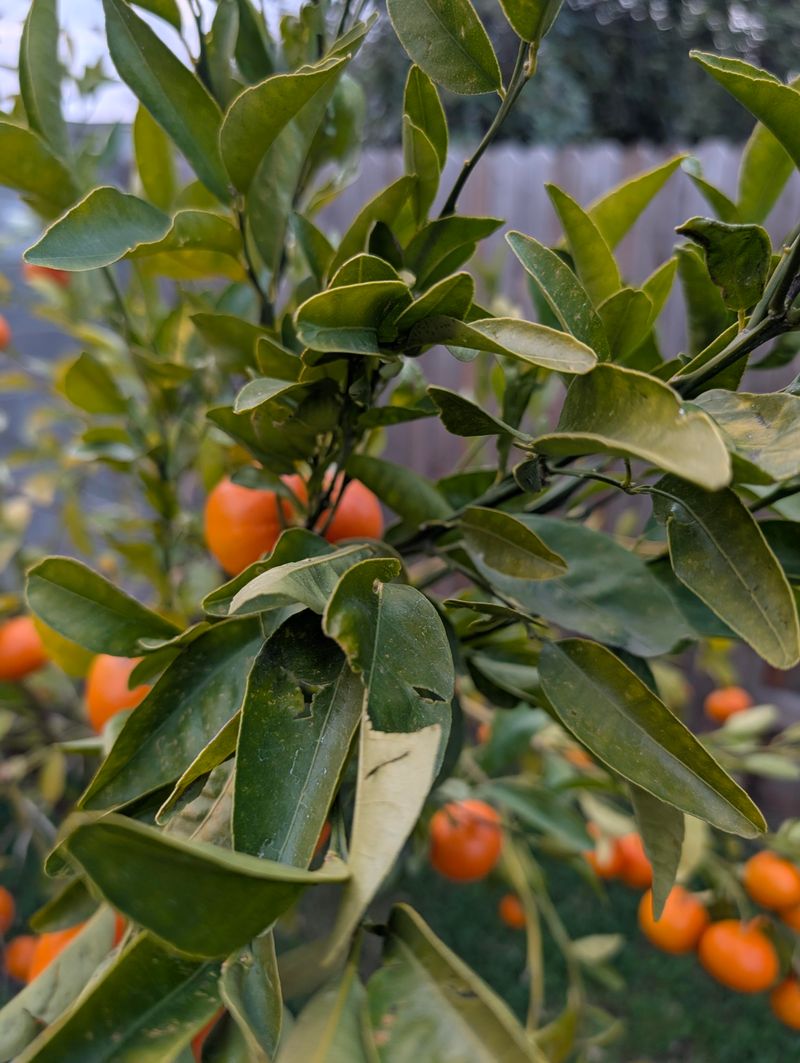California’s perfect blend of sunshine, diverse microclimates, and innovative agricultural research has made it the birthplace of countless fruit varieties we enjoy today.
From university breeding programs to small family farms, the Golden State has quietly revolutionized the fruits we find in grocery stores across America. Many of these California-born fruits have become such staples in our diets that we rarely stop to consider their fascinating origins.
Next time you bite into a juicy strawberry or slice a navel orange, you might be enjoying a California invention without even realizing it. Here are surprising fruit varieties that got their start in the sunshine state.
1. Navel Orange
Originally discovered as a mutation in Brazil, the Washington navel orange found its true home in Riverside, California in 1873. Two trees, sent by a USDA missionary, thrived in Southern California’s climate.
The parent trees still stand today at the corner of Magnolia and Arlington Avenues. From these humble beginnings, California’s citrus industry exploded, transforming the state’s economy.
What makes navels special is their seedlessness and that characteristic “belly button” at the bottom – actually a second, undeveloped fruit inside the main orange.
2. Flame Seedless Grape
Red, juicy, and conveniently pit-free, Flame Seedless grapes revolutionized snacking when they emerged from USDA breeding programs in Fresno during the 1970s.
Before their development, seedless table grapes weren’t nearly as flavorful or shelf-stable. California grape breeders specifically selected for that perfect balance of sweetness, crunch, and keeping quality.
You’ve probably munched on these crimson beauties without realizing they’re a relatively recent California innovation that now accounts for a significant portion of the state’s massive grape industry.
3. Wonderful Pomegranate
The Wonderful pomegranate variety was discovered growing wild near Porterville, California in 1896. A farmer named Fred Roeding recognized its exceptional qualities and began commercial propagation.
Unlike other pomegranate varieties, the Wonderful produces larger fruits with deeper red arils (the juicy seed coverings) and a perfect sweet-tart balance. The timing couldn’t have been better – just as Americans were developing more adventurous palates.
Today, nearly all commercial pomegranates grown in the United States are the Wonderful variety, making it California’s greatest contribution to this ancient fruit.
4. Albion Strawberry
Released in 2006 by UC Davis breeders, the Albion strawberry quickly became a farmer’s dream. Unlike earlier varieties, it produces consistently high yields throughout California’s long growing season.
What makes Albion special is its perfect balance of sweetness and acidity. The berries maintain their bright red color throughout and don’t turn dark after picking.
Most impressively, Albion strawberries resist many common diseases that plagued earlier varieties. If you’ve enjoyed California strawberries recently, there’s a good chance they were this remarkable variety.
5. Pluot
Geneticist Floyd Zaiger created the pluot in the 1980s by crossbreeding plums and apricots. Working in his Central California nursery, he aimed for a fruit with the best qualities of both parents.
The result was magical – pluots have the juicy sweetness of plums but with more complex flavors and firmer flesh. Most varieties are about 75% plum and 25% apricot genetically.
Zaiger’s family nursery developed dozens of pluot varieties with creative names like Flavor Supreme and Dapple Dandy. I used to think they were just fancy plums until learning about their fascinating hybrid origins.
6. Pixie Tangerine
Developed at UC Riverside in 1927, the Pixie tangerine remained relatively obscure until Ojai Valley farmers recognized its potential in the 1960s. This tiny citrus fruit defied conventional growing wisdom.
Unlike most tangerines, Pixies get sweeter the longer they hang on the tree. Their small size belies their incredible honey-like sweetness and complete lack of seeds.
Ojai’s unique microclimate, with its warm days and cool nights, proved perfect for Pixies. The fruit has developed an almost cult-like following among citrus enthusiasts who eagerly await their brief spring season.
7. Medjool Date Palm
While dates originated in the Middle East, California saved the Medjool variety from extinction. In the 1920s, a deadly disease threatened Morocco’s Medjool palms, prompting the USDA to import 11 offshoots to Nevada.
After quarantine, these precious palms found their way to California’s Coachella Valley. The desert climate proved perfect for these “kings of dates” with their caramel-like sweetness and soft texture.
From those original 11 offshoots, California’s date industry flourished. Today, the state produces nearly all of America’s Medjool dates, transforming a rescue mission into a thriving agricultural success.
8. Fuyu Persimmon
Japanese immigrants introduced persimmon cultivation to California in the late 1800s, but the astringent varieties proved challenging for American palates. The non-astringent Fuyu changed everything when it arrived in the early 1900s.
Unlike its pucker-inducing cousins, Fuyus can be eaten while still firm like an apple. Their sweet, honey-like flavor with hints of cinnamon made them instantly appealing.
California’s Central Valley provided ideal growing conditions. Today, the state produces virtually all commercial persimmons in the US, with the Fuyu variety leading the way in popularity.
9. Cara Cara Orange
Discovered as a chance mutation on a Washington navel orange tree in Venezuela, the Cara Cara found its commercial footing in California orchards during the 1980s. Farmers were stunned by its striking pink flesh.
Beyond its Instagram-worthy appearance, the Cara Cara delivers complex flavors reminiscent of cranberries and raspberries, yet remains sweet and low in acid. It also packs more vitamin A than typical oranges.
California growers recognized its potential and rapidly expanded production. Today, these pink-fleshed beauties are among the state’s fastest-growing citrus exports, proving that good fruit sometimes comes in surprising packages.
10. Chandler Strawberry
Released by UC Davis in 1983, the Chandler strawberry transformed California’s strawberry industry almost overnight. Breeders specifically developed it for the state’s coastal growing regions.
Farmers loved Chandler’s exceptional yield and disease resistance. Consumers fell for its perfect balance of sweetness and acidity, along with its classic conical shape and brilliant red color.
For nearly two decades, Chandler dominated California strawberry fields. While newer varieties have since emerged, many people’s mental image of the perfect strawberry was shaped by this groundbreaking California creation.
11. Improved French Prune
Louis Pellier brought prune plum cuttings from France to California during the Gold Rush era. These original trees formed the foundation of California’s dried fruit industry.
Over generations, California farmers selected and improved these prunes, developing what became known as the Improved French variety. The fruits were larger, sweeter, and dried more consistently than their European ancestors.
By the early 1900s, California produced 70% of the world’s prunes, centered around Santa Clara Valley (now Silicon Valley). The Improved French prune remains the industry standard, despite its humble borrowed name.
12. Hass Avocado
In 1926, California mailman Rudolph Hass planted some avocado seeds in his La Habra Heights yard. One tree produced strange fruits with bumpy dark skin – completely different from the smooth, green avocados common at that time.
After nearly cutting down this odd tree, Hass discovered its fruits had exceptionally rich flavor and creamy texture. The tree also produced more consistently than other varieties.
Patented in 1935, the Hass avocado now accounts for 95% of California’s avocado crop. That single backyard tree launched a billion-dollar industry – and it survived until 2002!
13. Aprium
Another Floyd Zaiger creation, the aprium is like the pluot’s cousin – but with the genetic ratio flipped. These fruits are approximately 75% apricot and 25% plum.
Developed in the 1980s in Zaiger’s Modesto breeding grounds, apriums maintain the distinctive apricot flavor but with enhanced juiciness and complexity from their plum genetics. The skin has a slight fuzz like an apricot.
California’s dry, hot Central Valley provides the perfect climate for these delicate hybrids. While less common than pluots, apriums demonstrate California’s continuing innovation in creating entirely new fruit experiences.
14. Mission Fig
Spanish missionaries brought fig cuttings to San Diego in 1769, establishing them at California’s first mission. As missions spread northward, so did these figs, earning them the name “Mission figs.”
Over generations, these trees adapted to California’s climate, developing into a distinct variety. Their dark purple skin and strawberry-red flesh became prized for both fresh eating and drying.
Mission figs represent California’s oldest cultivated fruit, predating statehood by nearly a century. The variety remains popular today, with many old trees still producing in historic mission gardens and modern orchards alike.
15. Cotton Candy Grape
Developed by horticulturist David Cain at International Fruit Genetics in Bakersfield, Cotton Candy grapes hit markets in 2011. These green grapes deliver an uncanny flavor resembling spun sugar.
Creating them required crossing wild grape species with commercial varieties – no artificial flavoring involved. The breeding process took over a decade of careful selection.
Limited growing seasons and high development costs make these grapes pricier than conventional varieties. Despite this, they’ve created a sensation, proving California’s fruit innovation continues into the 21st century with varieties designed specifically for flavor rather than just shelf life.
16. Tango Mandarin
Released by UC Riverside in 2006, the Tango mandarin solved a persistent problem – seeds. Developed through mutation breeding of the popular W. Murcott variety, Tango produces virtually seedless fruits even when cross-pollinated.
California citrus growers quickly embraced this easy-peeling, sweet mandarin. Its deep orange flesh and rich flavor made it an instant hit with consumers seeking convenient, healthy snacks.
The Tango represents California’s answer to increasing competition from imported mandarins. Its development demonstrates how the state’s university breeding programs continue supporting agricultural innovation through science-based solutions to market challenges.
17. Cuties/Halos Mandarins
While not technically varieties themselves, these branded California mandarins revolutionized how Americans consume citrus. Introduced in the early 2000s, they primarily consist of Clementine and W. Murcott varieties grown under strict quality standards.
California growers recognized that marketing small, seedless, easy-peel mandarins directly to children could transform consumption patterns. The cute branding and consistent quality created a whole new category of premium citrus.
Before these branded mandarins appeared, most Americans rarely ate mandarins outside of canned form. Now they’re lunchbox staples nationwide – a California marketing success as much as an agricultural one.

